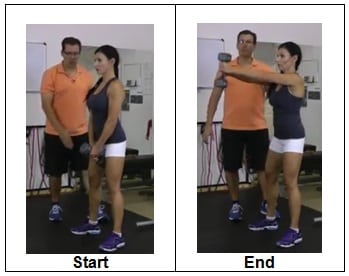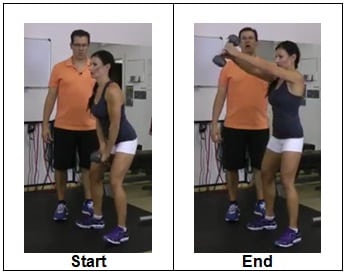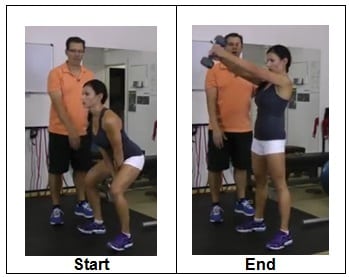
Here’s how you can get started with the dumbbell swing without back pain.
I hope you had a wonderful weekend.
I had a great weekend with my family. Time spent with loved ones will always be a happy memory.
Today, I will talk about the importance of performing the dumbbell swing with proper form. You want a neutral spine and pelvis to have your back stacked up on the pelvis.
When it comes to doing a dumbbell swing, there are certain things you should do and certain things you should avoid. You want to avoid back pain when doing this exercise by ensuring that your spine is maintained in a neutral position.
A neutral spine will ensure you get the most out of your workout routine.
I will discuss that in more detail below.
I hope you will enjoy the article.
Take care!
~ Rick
CLICK HERE to watch the YouTube video.
Dumbbell swing is one of the most effective exercises for developing explosive power and building a strong posterior chain. The movement can be performed using either a barbell or kettlebell, but it’s also possible to do the exercise with just dumbbells. You can do this dumbbell swing without back pain.
It is a great exercise for the glutes and hamstrings, but it can also cause back pain if you’re not doing it correctly. The big problem with dumbbell swings is a lot of people will lose that stacking of the back and hips, which takes away from the effectiveness of the exercise and increases the risk of injury.
There are a few things about dumbbell swings that you can do without back pain.
Orsy will demonstrate a few exercises to do a dumbbell swing without back pain.
Regular Dumbbell Swing with no movement.
I want to highlight that there are parts that move, and there are parts that don’t move. All that is moving here are your shoulders. Nothing else is moving. Set in those shoulders, nice and tall, and go through the dumbbell swing to shoulder height.
Then progress into a little bit of a hinge and a little bit of a swing.
Here we are getting movement in the shoulders. We are getting a little movement in the hips, but the curve in the back stays the same. All of the movement is happening at the hips and the shoulders. Nothing is happening in that low back.
Thirdly, Orsy is going to do a bigger swing.
Bend your knees slightly without having an arch on your back. Slowly swing the weight between your legs while pushing your hips back. Contract your glutes and thrust your hips forward while swinging the dumbells onto chest level. Once the weight is behind you, avoid placing the weight onto your arms or shoulder. The dumbbell should swing upward at the momentum of your hip thrust. Contract your core, glutes, and quads. Allow the weight to swing back between your legs and repeat the movement.
There you go! That is the importance of stacking your back above your pelvis and having the pelvis do all the movement.
If you are having difficulties with the dumbbell swing, pick the level that works best for you. You can start with arm movements. You can start with a little bit of a hip hinge and then go to a fuller swing.
Your back is stacked up over your hips, and there is no change in your spine. If you find swinging overhead causes you to arch your back, go to shoulder height and remember that all the movements are happening in your hips. If you do that, you will work on your core way more. You will get more of the desired results and avoid injury, especially back injuries.
Train hard but avoid injury.
Take care!
Rick Kaselj, MS.
If you want to end your back discomfort for good and get back to pain-free workouts, click here to check out the Low Back Pain Solved program.




